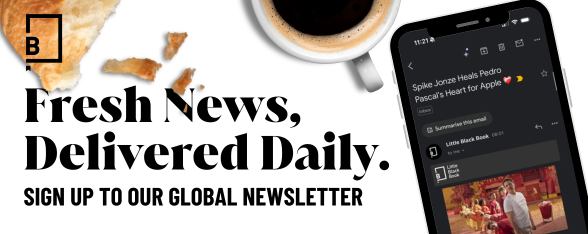
Google’s Guide to Accessible Storytelling: The Goal Should Be to Make Everyone Feel They Belong

The advertising industry is creating content that’s shutting out vast swathes of its potential audience - but an honest approach to accessibility can open gates and break down barriers. And this week at Cannes Lions, Google launched the ‘All In’ toolkit to help brands and agencies make sure they’re not leaving disabled audiences behind.
At the launch, CMO Lorraine Twohill says that accessibility is a key component of fully inclusive marketing. “Simply put, fully inclusive marketing has to be both possible to represent and be accessible to everybody, whether they are disabled or not... And so it’s incredibly important that we leave nobody behind in that journey.”
The guidelines are full of tangible, actionable points to help marketers, agencies and production companies to create content that is more accessible, such as advice around colour contrast and viewability, the importance of creating alt text for social media posts and best practices for inclusive events.
The guidelines have been developed in tandem with external experts and organisations such as LaVant Consulting and Disability:IN, and endorsed by influential industry organisations such as American Association of Ad Agencies, Ad Council and Cannes Lions. They have been driven internally by KR Liu, head of brand accessibility at Google’s Brand Studio. Streaming to the beach, KR spoke of her experience as a queer, disabled woman not seeing herself represented in the media or by brands.
“Great advertising should include everyone, not just in the work but how and where it reaches people,” she says. “This means acknowledging the one billion people around the world who have disabilities and acknowledging that each person has a unique background and set of circumstances.”
She had three key takeaways for marketers and creators. Firstly, that ‘disabled people are their own experts’, and so diverse voices must be included from the start of any project. The second was to account for intersectionality and to appreciate people with disabilities holistically, considering a wide range of identity markers. And thirdly, she says, accessible marketing is "a mindset and not a box to tick".
“Accessibility should be a sustained commitment and embedded into every aspect of a brand, from conception to execution to MBI. While we have come far, we recognise we still have a long way to go and achieving our accessible marketing goals is a continued process.”
KR pointed out that accessibility also opens up a huge business opportunity for brands as it allows their marketing content to reach a bigger, more diverse audience. To date, businesses have tended to think about accessibility in terms of product design - how usable a product is, rather than as something applicable to storytelling. “The goal for us all should be to make everyone feel that they belong,” she says.
As for Google, they will continue to audit their own work, refining and adding to accessibility best practices. For Lorraine, a major goal is the make the business case for inclusive and representative marketing.
“Ultimately, what I want to come back to you all on and be able to prove is that our campaigns are way more effective and way more impactful,” she says. She says they’d already seen huge results on their Chromebook marketing by dedicating 15% of media spend to multicultural audiences, using bespoke creative - for example in the US, creating special campaigns for the country’s significant Hispanic communities.
The team proactively brought their agency and production partners along with them, and Lorraine is mindful that the partners don’t have the resources or might of Google. Therefore she is keen to support the agencies in their journey to improve the work, mindful that many of the agencies Google works with are medium-sized or independent.
Production is a key part of ensuring that work is accessible, and diversity behind the camera can also flag accessibility issues early on.
“We were slow to the production side of the house,” says Lorraine. “It was really when a young African American woman in my team said to me, you know, you’ve hired me, put me in this job, but now I’m giving my agency feedback about how they’re treating my community in our creative and they’re not listening to me. And the reason was because they were so far down the creative process. They’d shot the work. And so now in our marketing toolkit that we use internally, and in the All In site, we focus a lot on the entire journey.”
That covers everything from considering the accessibility of locations for disabled cast and crew to supporting talent with disabilities, from photographers to make-up artists.
Google’s call to action comes at a time when some nervy marketers might consider scaling back, or might perceive accessibility as a burdensome risk - but Lorraine says that it was all the more important to make sure marketing content is not inadvertently locking people out.
“Brands have to think about who their audiences are and how they reach them. I think I see this as a massive business opportunity.”















